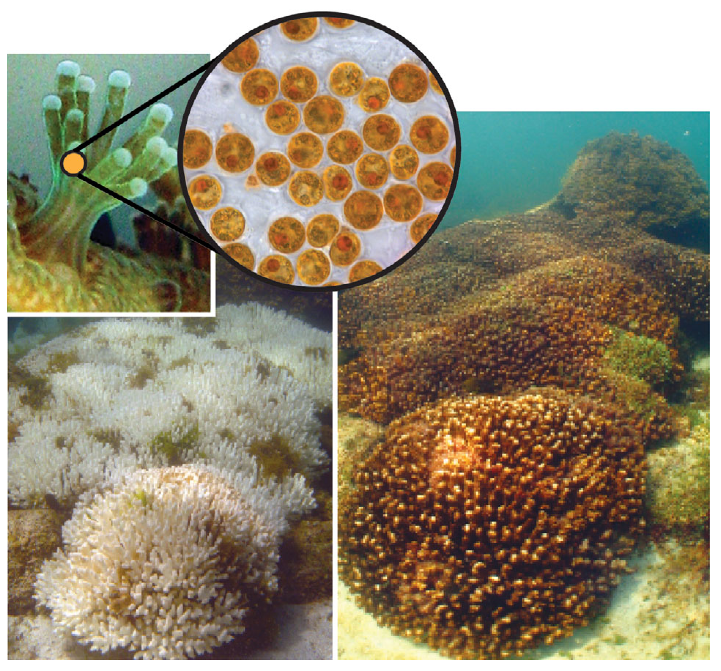
Resident Symbiodinium spp. remained stable within Pocillopora corals following a cold-water stress event off Baja Cali fornia, Mexico, in 2008. Photos: T.C. LaJeunesse, M. D. Aschaffenburg, D.T. Pettay
Environmental changes, if severe enough, can cause coral to bleach and expel their zooxanthellae. Under these conditions, one would think that if a more temperature-tolerant Symbiodinium species inhabited a coral, it would become the new dominant species. This is not the case, however, at least with eastern Pacific Pocillopora spp. corals.
Research undertaken by McGinley and others from the University of Delaware, the Florida International University, and The Pennsylvania State University document these findings in the paper “Symbiodinium spp. in colonies of eastern Pacific Pocillopora spp. are highly stable despite the prevalence of low-abundance background populations.”
What the scientists did was survey the Symbiodinium species in a wide range of Pocillopora coral after a cold water bleaching incident in the Gulf of California to evaluate their Symbiodinium preferences. This bleaching incident affected individual coral colonies differently depending on the dominant Symbiodinium sp. in their tissue. Corals that were more susceptible to bleaching contained high levels of Symbiodinium ITS-2 type C1b-c. Tolerant corals contained Symbiodinium ITS-2 type D1. The researchers also found many corals in their survey did in fact contain lower levels of more temperature-tolerant Symbiodinium sp. (i.e. C1b-c or D1). However, despite bleaching and having low levels of more temperature-tolerant Symbiodinium in their tissues, only 3% of those corals surveyed actually switched to the more temperature tolerant algae.
This finding have serious implications for coral as climate change takes place. If certain coral species have a low propensity for switching Symbiodinium, even if conditions favor a more temperature-tolerant species, they will not last as long as coral that are willing to switch.









0 Comments